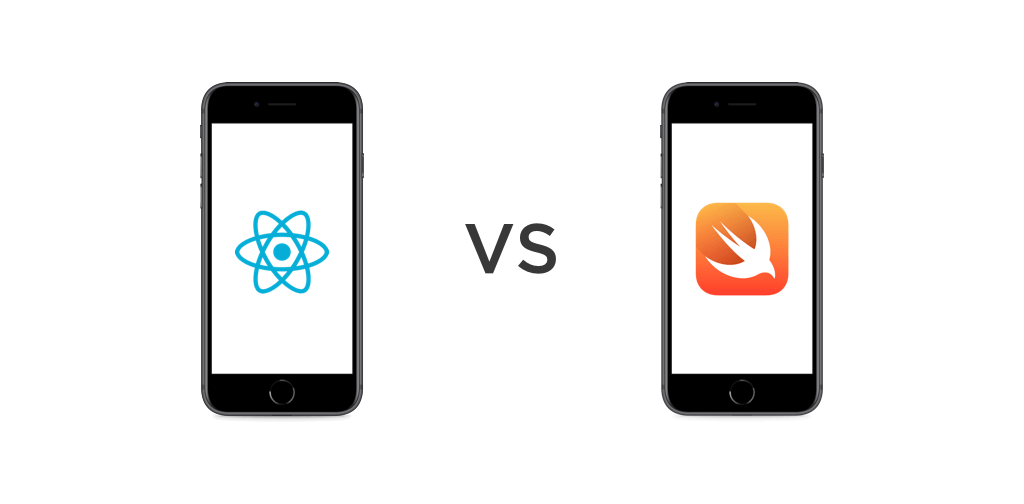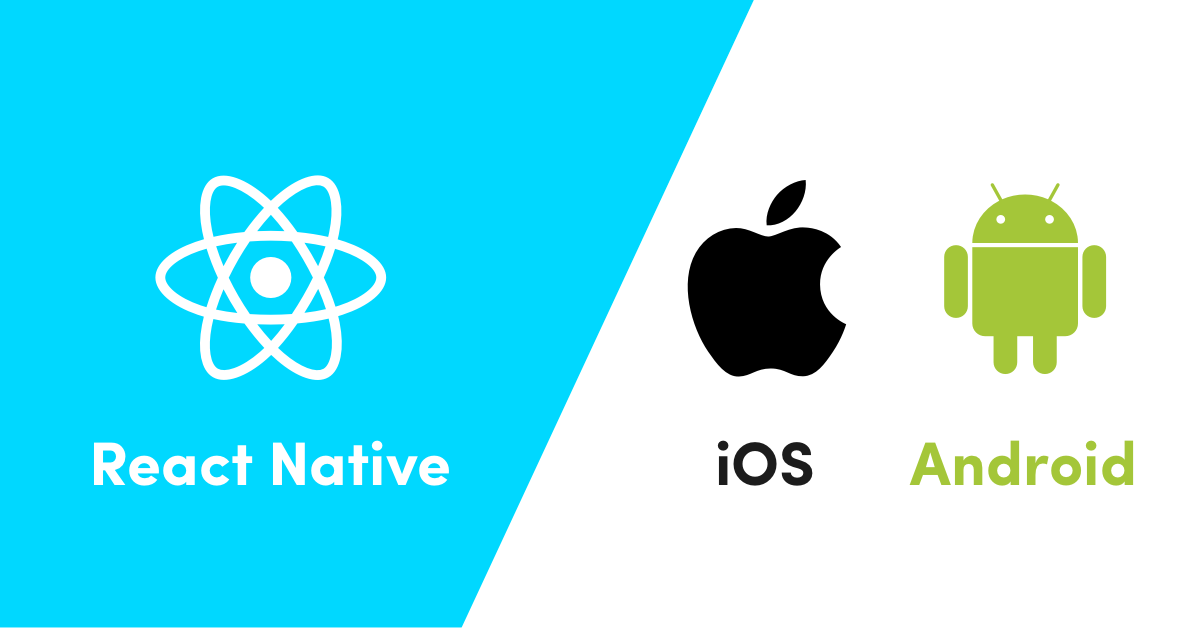When do developers often face the dilemma of choosing to React Native vs Swift with a React Native app development company? – During the mobile app development. So, let’s check out what native and cross-platform development are, and which programming languages React Native vs. Swift are better to choose for mobile apps.

Illustrated by Fireart
What is React Native?
Native apps are developed for only one operating system at once. Native apps are developed for only one operating system at once.
If we take React Native, it will be a JavaScript framework that is a powerful yet simple working tool for building web applications. In addition, the language can be easily learned, and various additional tools have been made available since the first language introduction in 1995.
To create two native applications, you will have to code for both platforms Android and iOS in parallel.
React Native is a great tool to build complex cross-platform applications. If you are planning a large-scale and popular product, consider using React Native. It has extensive documentation and strong tech support. It is also worth choosing React Native if you plan on reusing code for your desktop app and Web app.
What is Swift?
Swift as a programming language is multi-paradigm and general-purpose. It was first developed by Apple and the open-source community of developers. This language was released in 2014 and was primarily designed to replace Objective-C, which was Apple’s earlier programming language.
The language got rid of the legacy of Objective-C, and now the process of creating code is very convenient and has practically no drawbacks. This is the easiest way to create an iOS app.
It is an intuitive language for iOS, macOS, tvOS, watchOS, and more.

Swift as cross-platform development is the process of creating an application that may run on multiple platforms. This may be achieved with tools like React Native, Xamarin, and Flutter. Apps may be deployed on both on Android system and iOS.
Advantages and Disadvantages of using React Native
Sure thing, each technology has both pluses and minuses to consider before deciding on react native or swift. Let’s see what the advantages & disadvantages of using React Native are. Here we go.
Advantages
Native apps may provide an exceptional user experience. They typically deliver high performance. The UX is also improved because the visuals are adapted to the UX design of the platform.
Besides, you will find the following features among the React Native vs Swift advantages:
Flawless performance and high speed
Native applications take full advantage of the device’s processing speed because they are built for a specific operating system. The apps show decent, error-free performance and smooth operation.
Offline work
Native apps can function even when there is no Internet connection. If you need any appropriate functionality to develop a native application, then an Internet connection will be a necessity.
Fantastic UI / UX Design capabilities
Great user experience and design possibilities are provided. For example, developers may use the most modern animation and UI / UX designs.
Easy to navigate
The user interface of native apps is straightforward and allows end-users to quickly and easily learn how to navigate the app.
Easy to integrate with equipment
Native apps can be easily integrated with device hardware such as touchscreen, GPS, and camera.
Hassle-free application launch
Native apps strictly follow operating system guidelines, making it easier to launch on the App Store.
Higher reliability and safety
Native apps follow all operating system guidelines, are reviewed & approved by the App Store, which makes them secure and reliable. Fast implementation of first-class features guaranteed.
In native apps, complex functions such as VR, AI, IoT, and AR can be integrated quickly and seamlessly.
Latest developer tools and SDK
Developers have access to libraries and solutions that interact with a specific OS regularly updated. React Native uses a JavaScript library that allows to development of apps for both iOS and Android systems.
Cross-platform development has two big advantages – it saves time and money. The point is that it is difficult to create an app component that works on different platforms and provides the same performance as the native one optimally.
Below there are the main benefits of cross-platform development.
Reusable code
Cross-platform mobile application development allows developers to use the same code for multiple operating systems and different applications at once. Using one code is convenient for making changes and keeping the code in working order.
Faster time to market
Hybrid mobile apps are ready-to-launch products and always get to market faster. By using this type of framework, application developers can quickly release applications.
Reduced development costs
By using a cross-platform framework, developers can significantly reduce costs. Since it takes less time and effort to develop an application, it helps to reduce application development costs.
Performance and UX close to native apps
The characteristics and internal functions of mashups are similar. This allows developers to speed up the development process and maintain a consistent experience for end-users.
While working with a cross-platform framework, there also are stages of testing and refinement, but you will receive an application that may easily be adjusted to the desired platform in the end.
Disadvantages
But there is a small drawback that will be a real disaster for low-budget projects. For example, for a startup native apps will be terribly expensive. Not as expensive as reactive jets, of course, but it is more like taking on the budget.
React Native is the best choice when your application doesn’t need to do a lot of work. If your application needs to do a lot of work, then it is better to choose native development. But if you need a framework for a heavy app, React Native just won’t do.
Popular React Native apps
Among the variety of apps created with the technology, there are very popular brand names and for sure the apps you often use like:
- Walmart
- Bloomberg
Instagram, Skype, Walmart, Tesla, Facebook, Wix – this is the smallest list of apps written in React Native.
Advantages and Disadvantages of using Swift
Also, let’s analyze the advantages & disadvantages of using Swift vs React are there. Check them out.
Advantages
With Swift, you can develop a product that meets the demands of tomorrow, and completely new features can be added to such a product as needed. Generally, Swift apps are easier to scale.
Although it may consume more CPU power when running an application, Swift provides better performance than React Native.
The Swift programming language is compatible with Objective-C, and developers can use both languages on the same project. This is especially beneficial for large projects that are being renovated or expanded. By taking advantage of the Objective-C codebase, developers can add more functionality using Swift. This makes the transfer process safe and easy.
With corporate support from Apple, Swift has one of the most vibrant and active open source communities. Although it is a young language, there are already a fair amount of resources available to developers.
Using Swift for both front-end and back-end applications allows code to be reused and shared, reducing development effort and speeding up the development process.
Disadvantages
The only drawback of Swift mobile development is that sometimes the product may lose its quality.
The language is still too young and there’s often a lack of talents to hire android application developer and implement the full tech stack on Swift.
Popular Swift apps
Among the variety of apps created with the technology, there are very popular brand names, and for sure the apps you often use in your every day life like:
- Slack

React Native vs Swift Compare
The main difference between React Native and Swift is that React Native is best for cross-platform development, while Swift is for building iOS apps.
Thus, while react vs swift you may develop an Android application in Java or Kotlin, for example, and choose Swift and Objective-C for iOS only.
| Parameters | React Native | Swift |
| Developed by | Apple Inc | |
| Type | Open-source UI framework | General purpose, multi-paradigm, compiled programming language |
| Initial release | 2015 | 2014 |
| UI development | Native components wrapped using APIs, cross-platform support | iOS native UIs using Swift UI |
| Community | Cross-platform development’s top pick with strong community backing | Relatively small community being an open-source project backed by Apple Inc |
| Performance | Native-like performance with quick response times, fluid navigation, and improved user experience | Faster and better performance when running complicated applications since it makes the most of device capabilities and produces better results for graphically demanding and computationally intensive applications. |
| Suitability | Cross-platform applications, SMEs, and startup applications | A truly native iOS app that makes use of the platform’s features and necessitates intensive processing and graphics |
| App Development | Faster
|
Slower |
| Usage | Most widely used
|
Less used |
| Language and Syntax | JSX Syntax, a JavaScript syntax extension and JavaScript-based framework | Concise and fully expressive syntax as an alternative to Objective-C |
| Development Cost | Relatively low | High |
| Documentation | Wonderful and elegant | Wonderful and elegant |
| Used By | Facebook, Flipkart, Shopify, Skype, Instagram, Wix, Walmart, Tesla, Discord, Tencent, and others. | Khan Academy, Eventbrite, LinkedIn, Airbnb, Sky Guide, etc. |
Development Speed
Here the speed of development with Swift vs React Native will be faster if you develop native iOS Apps. Swift will be the easiest way to create an iOS app, while React Native is a JavaScript framework that is a powerful yet simple working tool for building web applications.
Programming Language
JavaScript may be used by React Native for building cross-platform applications. JavaScript is a very popular language in the web community today. This language is commonly used together with React, as well as other popular JavaScript frameworks.
Swift, as a language is, was designed as a replacement for Objective-C, which is Apple’s earlier programming language.
User Interface
Application components look similar to native ones. React Native uses native components, and this fact should give developers confidence that application components will update instantly after any OS UI update.
As the native iOS language developed by Apple for building apps, Swift does a great job when it comes to integrating into iOS design as well as leveraging UX principles. However, building an app using Swift is coding a native app from scratch. Therefore, all elements must be made individually and brought to perfect condition.
Performance
React Native vs Swift performance is another point to consider. Swift or react native?
Compared to a framework, a Swift app will perform better in most cases. Although it can consume more CPU power when running an application, Swift provides better performance than React Native.
Working with graphic effects can be problematic for React Native framework. To deal with this problem, ReactNative allows developers to embed their own code into the application, or using different resources and tools to solve different problems, etc.
Learning language
React Native is relatively easy to learn because its language is JavaScript, which has been around for many years. Therefore most developers know the language well.
Swift is not difficult to learn. Apple-designed it with the understanding that it would have to be learned from scratch. However, there are rare specialists yet keen on it.
Development team
Keep in mind that Swift app development company will not be easy to find. React Native developers for hire are easier to find. It’s more likely that you get experienced developers for React Native projects rather than Swift because the last is the newer and still developing language and the talents are rare.

Community and support
With the help of the innovative React Native framework, web developers can build solid mobile apps with their existing JavaScript skills. Without compromising the end user’s experience or the caliber of the application, it provides quicker mobile development and more effective code sharing across iOS, Android, and the Web. This ensures better support and community growth.
The Swift Community Support offers unrestricted assistance over the phone, the web, and various self-help resources.
Stability
We can use third-party libraries thanks to module stability without worrying about the version at which they were created in Swift. React Native is still under development and is largely unstable.
Documentation
You may get a helpful guide that lays out the prerequisites for learning React Native, using these docs, and setting up your environment, etc. You may find up-to-date documentation for the framework any time you need it. You can easily create documentation for your Swift frameworks and packages using DocC, a documentation compiler. The extension files, articles, and tutorials that are stored alongside the source code for your package are combined with the comments you add to the source code to create your documentation.
Platform Maturity
Since Swift is the world’s quickest and most potent language, the platform is still not mature. It needs to handle a lot of problems, and there will be growing pains involved. React Native is more mature. It has a promising future because a sizable development community backs this technology. With the help of the React Native framework, web developers can use their understanding of JavaScript to build robust mobile applications.
Developer Cost
According to data from Glassdoor, a React Native developer in the USA makes an average hourly wage of roughly $46. According to the platform, the average hourly wage for a React Native developer in the nation may be between $30 and 72. Several variables, such as the amount of skill you require and the location you are trying to employ from, will affect the cost of hiring an iOS developer. In general, independent iOS developers bill anything from $30 to $150 per hour.
React Native vs Swift: What is the best way for iOS App Development?
They say among the developers that JavaScript and the React Native framework are easier to master than Swift. If the team is already writing web applications in React, then learning how to create cross-platform applications for mobile devices will not be difficult.
Understanding the differences between React Native vs Flutter is crucial for developers looking to choose the best cross-platform framework for their project.
Of all the programming languages, React Native will allow you to develop an application for two platforms with one team. Thus, working with a cross-platform framework saves you a penny, because you don’t have to look for native developers in two languages and pay them super large sums.
Anyway, both React Native and Swift are powerful solutions for app development. However, your choice should depend on the type of app you are developing. React Native is the best choice if you:
- It is necessary to develop an application for both iOS and Android platforms, with limited resources and a small team;
- Your app needs to look and work the same on both iOS and Android;
- Need live or hot reload and faster time to develop the application.
iOS Swift vs React Native is the best choice if you:
- It is necessary to develop an application for iOS only;
- It is necessary to maintain the application for a long time;
- You need to develop a complex application that uses most of the platform-specific code;
- An application is required to manage things such as the amount of memory used.
So, take into account the requirements of your project before making your choice.
There are also numerous successful both React Native & Swift project development cases accomplished by Fireart development. Feel free to look them through to better decide which one to choose for your iOS App React Native vs iOS Swift. Good luck!
FAQ
Can React Native be used with Swift?
Right, you can open Xcode and the project. If required, create custom Swift modules. expose the Swift modules through an Objective-C/React-Native bridge. Call the React-Native native module methods.
Is Swift easier than React Native?
The most widely used language, JavaScript, is supported by the framework React Native. Since 68% of developers use JS to code, as was already established, these developers may easily incorporate React Native into their work. Swift, however, is relatively simple to learn but still has a learning curve that differed from that of React Native which makes it rather a rare language to learn rather than easier or harder.
Can React Native replace Swift?
Will react native replace Swift? React, a top-notch JavaScript framework for creating user interfaces is combined with the greatest aspects of native programming in React Native. Use sparingly or liberally. You may already use React Native in your existing Android and iOS applications or you can start from scratch and build a whole new app. React Native is best for cross-platform development, while Swift is for building iOS. So, it’s hard to say about a complete replacement one buy another.





















